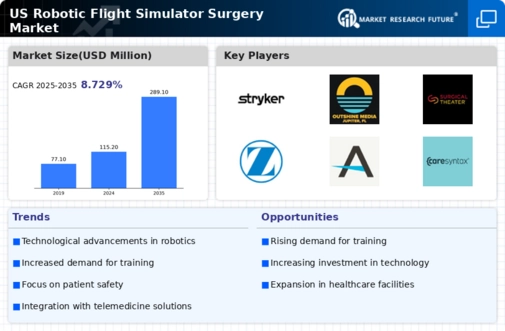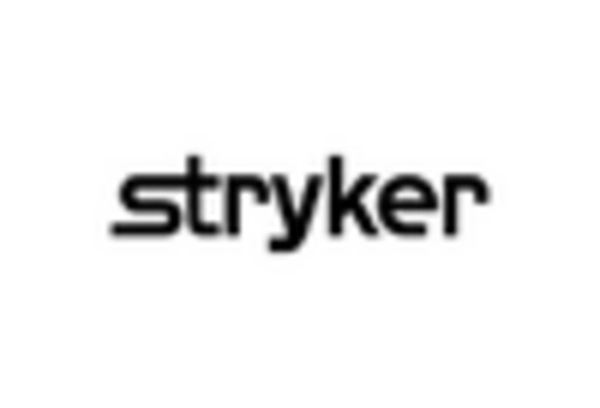Surgeon Training Enhancement
The robotic flight-simulator-surgery market is experiencing a surge in demand for advanced training solutions for surgeons. As surgical procedures become increasingly complex, the need for effective training tools is paramount. Robotic flight simulators provide a safe and controlled environment for surgeons to practice and refine their skills. This market segment is projected to grow at a CAGR of 15% over the next five years, driven by the increasing adoption of robotic-assisted surgeries. Furthermore, the integration of virtual reality and augmented reality technologies into these simulators enhances the training experience, making it more immersive and effective. Consequently, the emphasis on surgeon training is a critical driver for the robotic flight-simulator-surgery market, as healthcare institutions seek to improve surgical outcomes and reduce complications.
Rising Healthcare Expenditure
The robotic flight-simulator-surgery market is significantly influenced by the rising healthcare expenditure in the United States. With healthcare spending projected to reach $6 trillion by 2027, there is a growing investment in advanced medical technologies, including robotic surgical systems. This increase in funding allows hospitals and surgical centers to acquire sophisticated robotic flight simulators, which are essential for training and skill development. The market is likely to benefit from this trend, as healthcare providers prioritize investments that enhance surgical precision and patient safety. Moreover, the shift towards value-based care models further incentivizes the adoption of robotic technologies, as they are associated with improved patient outcomes and reduced hospital stays. Thus, the rising healthcare expenditure serves as a vital driver for the growth of the robotic flight-simulator-surgery market.
Technological Integration in Healthcare
The integration of cutting-edge technologies into healthcare is a pivotal driver for the robotic flight-simulator-surgery market. Innovations such as artificial intelligence, machine learning, and data analytics are increasingly being incorporated into robotic surgical systems. These advancements enhance the capabilities of flight simulators, allowing for more realistic training scenarios and improved feedback mechanisms for surgeons. As hospitals and surgical centers adopt these technologies, the demand for robotic flight simulators is expected to rise. The market is projected to grow by 12% annually as healthcare providers recognize the importance of staying at the forefront of technological advancements. This integration not only improves training outcomes but also aligns with the broader trend of digital transformation in healthcare, making it a crucial factor in the evolution of the robotic flight-simulator-surgery market.
Regulatory Support for Robotic Technologies
Regulatory support for robotic technologies is emerging as a key driver for the robotic flight-simulator-surgery market. The U.S. Food and Drug Administration (FDA) has been actively working to streamline the approval processes for robotic surgical systems, which encourages innovation and investment in this sector. As regulatory frameworks become more favorable, manufacturers are more likely to develop and introduce advanced robotic flight simulators to the market. This regulatory environment not only fosters competition but also enhances the overall quality and safety of surgical training solutions. The market is expected to grow by 8% annually as a result of these supportive measures, which facilitate the adoption of robotic technologies in surgical practices. Thus, regulatory support plays a crucial role in shaping the landscape of the robotic flight-simulator-surgery market.
Patient Demand for Minimally Invasive Procedures
The growing patient demand for minimally invasive surgical procedures is a significant driver of the robotic flight-simulator-surgery market. Patients increasingly prefer surgeries that offer reduced recovery times, less pain, and minimal scarring. Robotic-assisted surgeries align with these preferences, leading to a higher adoption rate of robotic systems in surgical practices. As a result, there is a corresponding need for effective training solutions, such as flight simulators, to ensure that surgeons are proficient in these advanced techniques. The market is anticipated to expand by 10% over the next few years, driven by this shift in patient expectations. Consequently, the emphasis on minimally invasive procedures is likely to propel the growth of the robotic flight-simulator-surgery market, as healthcare providers strive to meet patient needs while maintaining high standards of care.

















Leave a Comment